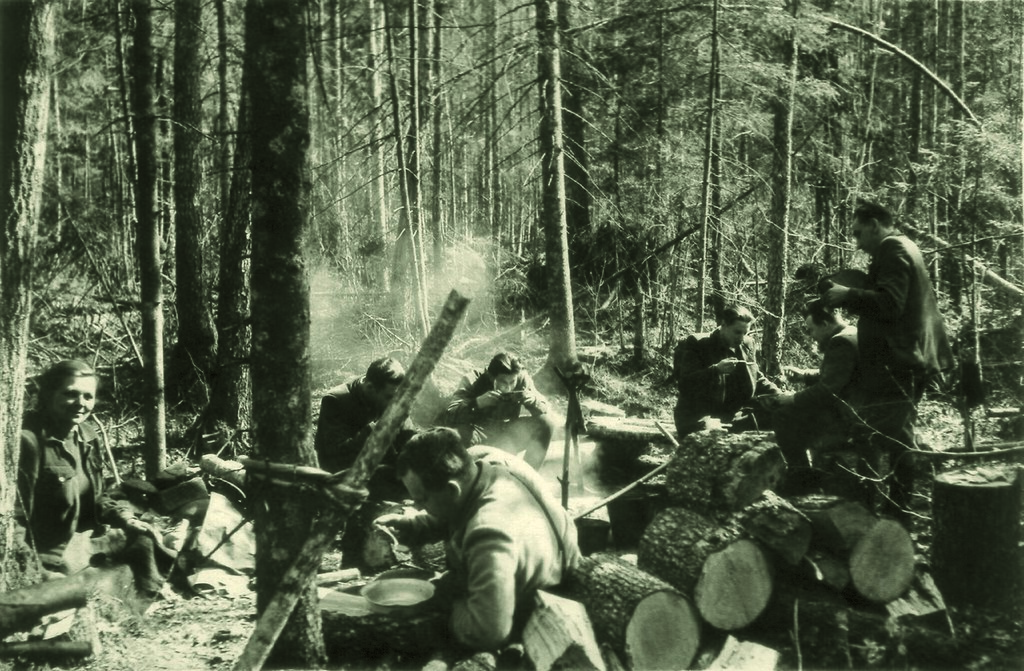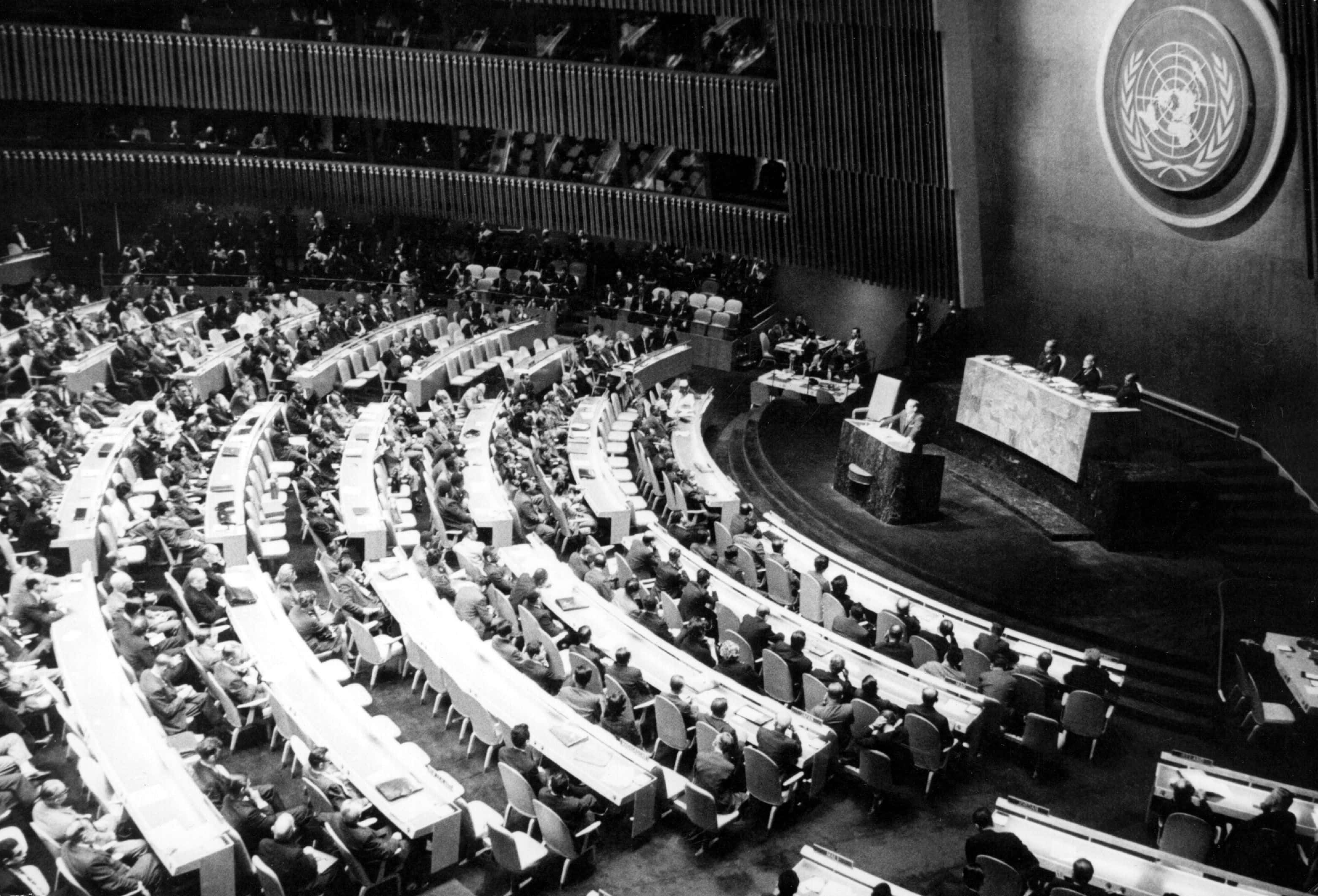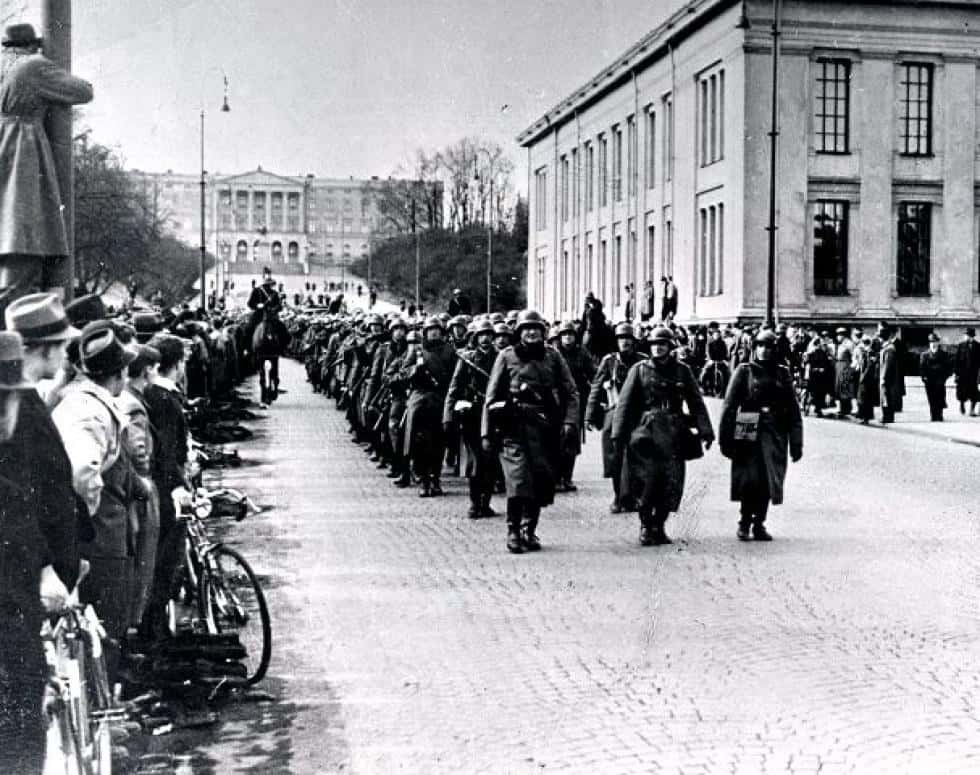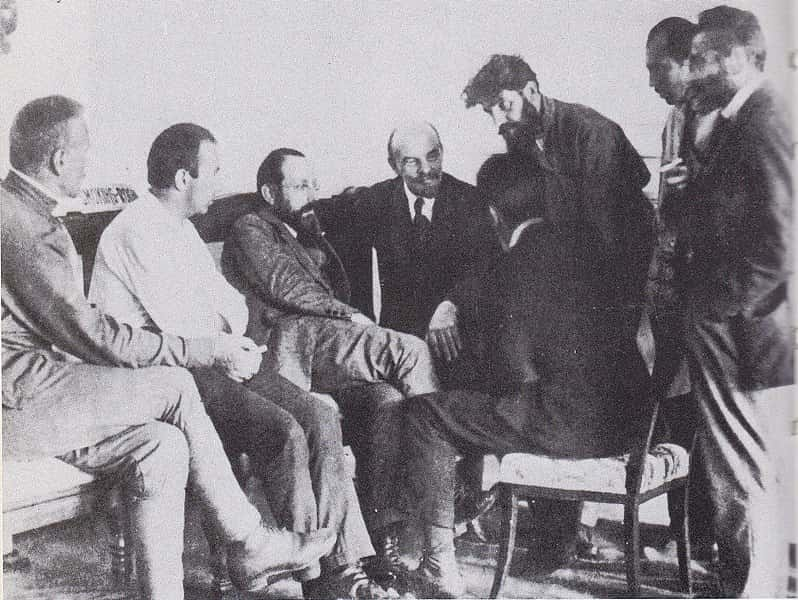Stories about the resistance movements during WWII continue to fuel much of our cultural imagination about the armed conflict, from Hollywood depictions to novels and documentaries. Even today, we continue to discover narratives of those who opposed autocratic rule throughout Europe and Southeast Asia, as well as resistance against colonial powers in various regions around the world. Resistance forces went by many names and, and they were filled with many heroic individuals performing impressive feats. Some were veterans from the armed forces, some were farmers, while others were students and teachers. Here are 42 facts and stories about WWII’s greatest resistance fighters.
42. Preparing for the Fight
Even though Britain was never occupied by Germany during the WWII era, with the potential peril persistently present across the waters, MI6 conceived "Section VII" in anticipation of possibly having to combat an occupation. These British groups also assisted in establishing or supporting resistance cells across Europe occupied by the Third Reich.

41. Widespread Resistance
Almost all regions across Europe under occupation during WWII contained some form of resistance movement. Poland, Italy, Belgium, Holland, France, Yugoslavia, Denmark, and Greece all had groups dedicated to fighting occupation. All told, there were 16 main groups throughout Europe.
40. Seeing the Forest Through the Trees
Anti-occupation resistance was not only aimed at the Axis powers during WWII. A resistance group known as the Forest Brothers sprang up in the region of Estonia, Latvia, and Lithuania. The group was primarily focused on engaging in guerrilla conflicts against the Red Army of the Soviet Union. The Forest Brothers resistance actually dates back before WWII. The term was first applied to those in the Baltic regions who sought refuge in the forests of the region during the Russian Revolution of 1905. Until 1918, Estonia, Lithuania, and Latvia were all a part of the Russian Empire.
39. Wolf Like Me
Sometimes resistance comes from within the ranks. The July Plot is a renowned example of a planned coup targeting a key figure, which was executed by German officers in 1944. Officer Claus Von Stauffenberg transported an explosive device, hidden within a suitcase, to a significant meeting at the "Wolf's Lair". He placed it under the table close to where the German leader was sitting. The explosive device did indeed detonate as anticipated, but not before the briefcase had been shifted by an oblivious officer attending the meeting. Although four officers lost their lives, the escape was successful without any harm.
38. Not to Plan
Numerous combatants, eventually referred to as the Forest Brothers, originated as drafted members of the Lithuanian Territorial Defense Force, which was supported by notorious German forces during WWII. After the Germans recognized the potential of this 20,000-strong division to transform into a nationalistic army for Lithuania, they disbanded the group and took the senior staff into custody. A considerable number of the armed service members pivoted their focus to defending against Red Army occupation on the Eastern Front.
37. While You’re Away
The Armia Krajowa, or the Home Army, was the largest and most dominant group of the Polish resistance during WWII. The group backed the exiled Polish Government, who were stationed in London, England during the period of German occupation. They often got encouragement and orders through the exiled government with the help of the British.
36. Taking Aim
The Home Army of the Polish Underground State was a significant movement that disrupted supply routes of the German occupiers, surprised their personnel, and also dealt with prominent collaborators of these occupiers. The group was held accountable for numerous assassinations, which included actor, Igo Sym, who was known for collaborating with the dominative German regime, and Austrian politician, Franz Kutschera, who had been serving as an SS officer.
 National Archives and Records Administration, Wikimedia Commons
National Archives and Records Administration, Wikimedia Commons
35. Reconnaissance
Armia Karjowa was not just a fighting force in Poland. The operation also gathered a lot of information and intelligence for the Allied forces. From 1939 to 1945, approximately 43% of all intelligence reports received by British secret services came from the Home Army in Poland. This information was integral for Allied forces when it came to overcoming German strategy and disrupting supply routes.
34. Care for a Drink?
Some of the attempts on the life of the German dictator during WWII are almost too wild to be believed. Take, for example, Henning Von Tresckow's effort to end someone's life. A disgruntled German officer, Von Tresckow, concealed an explosive in a crate filled with bottles of alcoholic beverage. When the crate was flown back to Berlin, the fuse malfunctioned and the explosive device never detonated.The controversial figure landed safely, much to Von Tresckow's amazement and regret.

History's most fascinating stories and darkest secrets, delivered to your inbox daily.
33. Man on the Inside
Tadeusz Żenczykowski was the leader of Operation N, the propaganda arm of the Polish Home Army resistance movement. He was given the code name “Kania” during WWII and took part in the Warsaw Uprising of 1944, which was the largest inner-city battle of the resistance. The objective of Operation N was to disseminate propaganda against the German occupiers with the aim of demoralizing and bewildering them.
32. What are your plans following the conflict?
As WWII drew to a close, Tadeusz Żenczykowski, codename Kania, used the skills he learned through the propaganda-oriented Operation N of the Polish Home Army to pursue a career in journalism. In 1945, he became the deputy chief of the Polish Section of Radio Free Europe. No longer having to dodge occupying forces, he just wanted to have his voice heard.
31. Put it in Neutral
Britain often looked to writers and artists to help with intelligence gathering in a variety of capacities. The Anglo-Irish novelist Elizabeth Bowen, for instance, sent back letters to Britain about the sentiments of the Irish, who were officially neutral during the conflict. Even to this day, some Irish see Bowen as a spy, while others see her as simply trying to help the British and Irish understand each other’s position.
30. All Walks of Life
Resistance movements often featured people from many different social classes and political beliefs. In France, resistance fighters counted among their ranks right-wing officers such as Henri Frenay, liberal Catholic law professors including François de Menthon, and author and poet Jean Cassou. It was common for resistance fighters to feel a united front with their comrades, despite possible differences in perspectives and experiences.
Jean Cassou
29. Organization is not Futile
Britain, in an attempt to support resistance movements across Europe, set up the Special Operations Executive in July 1940. The organization was overseen by Hugh Dalton, serving as the Minister of Economic Conflict. There were a number of different branches to the operation, from intellectual and cultural to militaristic.
28. Honorable Visit
The British Special Operations Executive set up commands across Europe to help with resistance cells. Maurice James Buckmaster, for example, was head of Section F, which was stationed in France during Vichy rule. He was given the Croix de Guerre by the French government for his help in combatting the authoritarian rule in France.
27. A Web of Secrets
Between 1941 and 1944, Maurice Buckmaster helped place 366 agents of the Special Operations Executive in France to establish almost 50 networks for the French resistance forces.
26. Feminist Action
Women played a major role in the French Resistance throughout WWII. They constituted approximately 20% of all Resistance fighters in the region and 15% of all political deportations to concentration camps during this period.
 Unknown Author, Wikimedia Commons
Unknown Author, Wikimedia Commons
25. Fighting for the Causes
As one of the prominent members of the French Resistance, Lucie Aubrac was invited by Charles de Gaulle to be a representative for the resistance fighters in the consultative assembly after the Vichy government was dismantled. Because of this appointment, Aubrac became the first woman to sit in a French parliamentary assembly.
 Getty Images
Getty Images
24. Uniting the Nations
Marie-Hélène Lefaucheux gained prominence as one of the standout French Resistance fighters during WWII. Her significant contributions were acknowledged post-conflict when she was selected as the only woman in the French delegation to the inaugural General Assembly of the United Nations.
23. Calling the Shots
Marie-Hélène Lefaucheux served as Vice President of the Paris branch of the French Committee of National Liberation. She devised a clandestine messaging system for French prisoners detained in hidden spots throughout Paris during the period of foreign occupation. This system allowed prisoners to keep their stories in check during interrogations.
22. Appeal to Resistance
Charles de Gaulle guided the Free French Forces from Britain as German occupants began taking over France. His "Appeal of 18 June" was transmitted through BBC radio, intending to inspire French nationals trapped in Dunkirk and Norway to maintain their resilience and avoid falling into German hands. But the BBC and the British ministers were not always fans of De Gaulle or his speeches. He nonetheless persisted in trying to get his message to the French people.
21. Regaining Control
As the tide began to turn in France and the resistance movement was starting to gain momentum against the German forces, Charles de Gaulle took on the leadership of the Provisional Government of the French Republic from 1944 to 1946 with the goal of re-establishing democracy in France.
 Getty Images
Getty Images
20. A Little Help From My Friends
Sweden provided assistance to the Free Norwegian Forces during the Liberation of Finnmark, a battle that occurred from 1944-1945. In the heat of the armed conflict, 1,442 law enforcement officers were flown in from Sweden to support the resistance movement.
19. Hitting the Books
The XU was the term for the clandestine intelligence operation serving the Allied forces in Norway during its occupation under German rule. Before the onset of conflict, they were simply a group of students at the University of Oslo. However, they later mastered the art of sabotage and gathering information.
18. Gender Parity
Anne-Sofie Ostvedt, one of the executive members of the XU group in Norway, was highly sought after by the Germans. But with the codename “Aslak,” most people assumed they were looking for a man, which often helped her go undetected. Following the conflict, she received a scholarship to UC Berkeley to study chemistry, where she eventually graduated with a master's degree.
17. To Arms, Comrade!
Asbjorn Edvin Sunde was a politician for the Communist Party of Norway, but during the German occupation of Norway, he became one of the lead saboteurs in the nation. From 1941 to 1944 he led the Osvald Group, which carried out nearly 40 acts of sabotage against the Germans. The secretive group provided Allied forces, especially Britain, a lot of help in the Scandinavian region.
 Klongn, CC BY-SA 4.0, Wikimedia Commons
Klongn, CC BY-SA 4.0, Wikimedia Commons
16. Worth a Shot
Numerous resistance groups across Europe naturally planned for the removal of a key dictator. Officially, there were a total of 27 attempts on the life of the leader of the National Socialist German Workers' Party. One of the first attempts emerged as early as 1938, when Maurice Bavaud, a Swiss theology student, bought a pistol with the intention to assassinate the man he perceived as an immediate danger to the Catholic Church.
15. We’re Going on Strike
Initially, Dutch resistance movements were slow to gather momentum. This was modified following the February Strike in 1941. The general strike, led by the Communist Party of the Netherlands, served as a protection campaign for Dutch Jews who were being unfairly treated.
14. Out in the Cold
After pogroms and mass arrests made by the Nazis in the Jewish neighborhood of Amsterdam, about 300,000 Dutch citizens participated in the February Strike. The general strike lasted for two days before being violently suppressed by the Germans on the third day. The strike is often considered the first public protest against the Nazis in occupied Europe.
13. Spartacus! Spartacus!
One of the key players in the Dutch Resistance was the Marx-Lenin-Luxemburg Front. Founded by Henk Sneevliet, Willem Dolleman, and Abraham Menist, one of the primary duties of the organization was the spread of propaganda opposing the German National Socialist regime. Their main outlet was the bi-weekly print magazine Spartacus, which ran about 5,000 copies.
12. Making a Left Turn
Before becoming a crucial figure in the Dutch Resistance during the early part of the conflict, Henk Sneevliet was deeply engaged in political activities. He formed the Revolutionary Socialist Party in 1929 with the aim of providing a left-wing counter to the rise of fascism in Europe. He used the connections and political know-how that he learned during these early days to become a major source of frustration for the occupying forces.
11. Anti-Pacifiers on the Pacific
The Anti-Japanese Army for the Salvation of the Country was a 10,000 troop strong resistance force stationed in Kirin (now known as the Heilongjiang province). Under the guidance of Li Hai-Ching, the movement opposed the pacification of Manchukuo, a suppression operation executed by the Japanese that extended from the Second Sino-Japanese conflict into WWII.
10. Against the Empire
For many outside continental Europe, resistance during WWII was part of a much longer process of anti-imperial resistance. Gandhi, for example, started the Quit India Movement in 1942 as non-violent anti-British Empire movement.
9. An Island to Call Our Own
Anti-Japanese resistance in the Philippines was a major part of the Allied effort in the Pacific side of WWII. The United States Navy began using submarines such as the USS Narwhal and the USS Nautilus in an attempt to aid Filipino guerillas.
8. Uniting the Front
In 1942, Luis Taruc formed the Hukbalahap (People’s Army Against the Japanese) in the Philippines. The group launched a number of successful ambushes, intelligence gathering, and sabotage missions against the Japanese. Before the period of intense conflict, Taruc was a communist politician, and in 1938, he endeavored to unite the Philippine Socialist Party and the Communist Party of the Philippines to combat fascism.
7. Whatever You Can Find
Captain Nieves Fernandez led 110 Waray guerillas against Japanese forces in the Philippines during WWII. Despite their limited numbers, Fernandez and her forces either eliminated or detained over 200 Japanese combatants during the island occupation. Fernandez didn't initiate the conflict as a prominent figure in politics or defense with abundant experience; she was a schoolteacher! Handling a classroom was all the experience she needed to become a major force of resistance.
6. Paper Boats
Cebuano guerillas in the Visayas scored one of the most important victories against Japanese forces when they captured 12 high-ranking Japanese officers after their sea-plane crashed off the coast of the islands. With these officers came the “Koga Papers,” which highlighted the strength and overall strategy of Japanese naval forces in the Pacific.
5. Humble Beginnings
In 1941, the Korean Liberation Army began with merely 30 members, announcing its resistance against Japan and Germany. Willpower and determination took these courageous individuals far: by the end of the conflict, the KLA expanded to a 339-person force. Despite their humble beginnings, the Korean Liberation Army concluded their conflict while collaborating with the United States Armed Forces. Because of this backing, the KLA went on to form the basis for the Republic of Korea Armed Forces.
4. Another drink?
An explosive device was only 13 minutes away from altering the course of WWII on its eve. George Elser, an everyday German citizen, had planned for weeks to detonate an explosive in a Munich alehouse where a prominent event was scheduled. Starting his speech on time, the speaker uncharacteristically finished his speech early—by 13 minutes. The explosion occurred after the leader of the National Socialist had already departed. Historians still debate what might have happened, had Elser been successful that day.
3. Helping Hand
Some nationals within Axis forces helped stir resistance from outside their home country. The Japanese People’s Emancipation League, for example, was formed in the city of Yan’an in China in 1944. With just under 500 members, the force aimed to confront the militaristic Imperial Japan and lay the foundation for a democratic government once the conflict ended.
2. Come Together
The Comitato di Liberazione Nazionale, or the National Liberation Committee, was the main resistance movement in Italy during the German occupation. The CLN was comprised of many different political parties and affiliations including the Italian Communist Party, the Italian Socialist Party, the Action Party, Labour Democratic Party, and the Italian Liberal Party.
1. Forming the Government
The CLN in Italy were successful in expelling the German occupation with the liberation of Rome in 1944. From the moment they took the city until the time of the first general election in 1946, the CLN formed the basis of the Italian government.
Sources: 1, 2, 3, 4, 5, 6, 7, 8, 9, 10, 11, 12, 13, 14, 15, 16, 17, 18, 19, 20, 21, 22, 23, 24, 25, 26, 27, 28















































